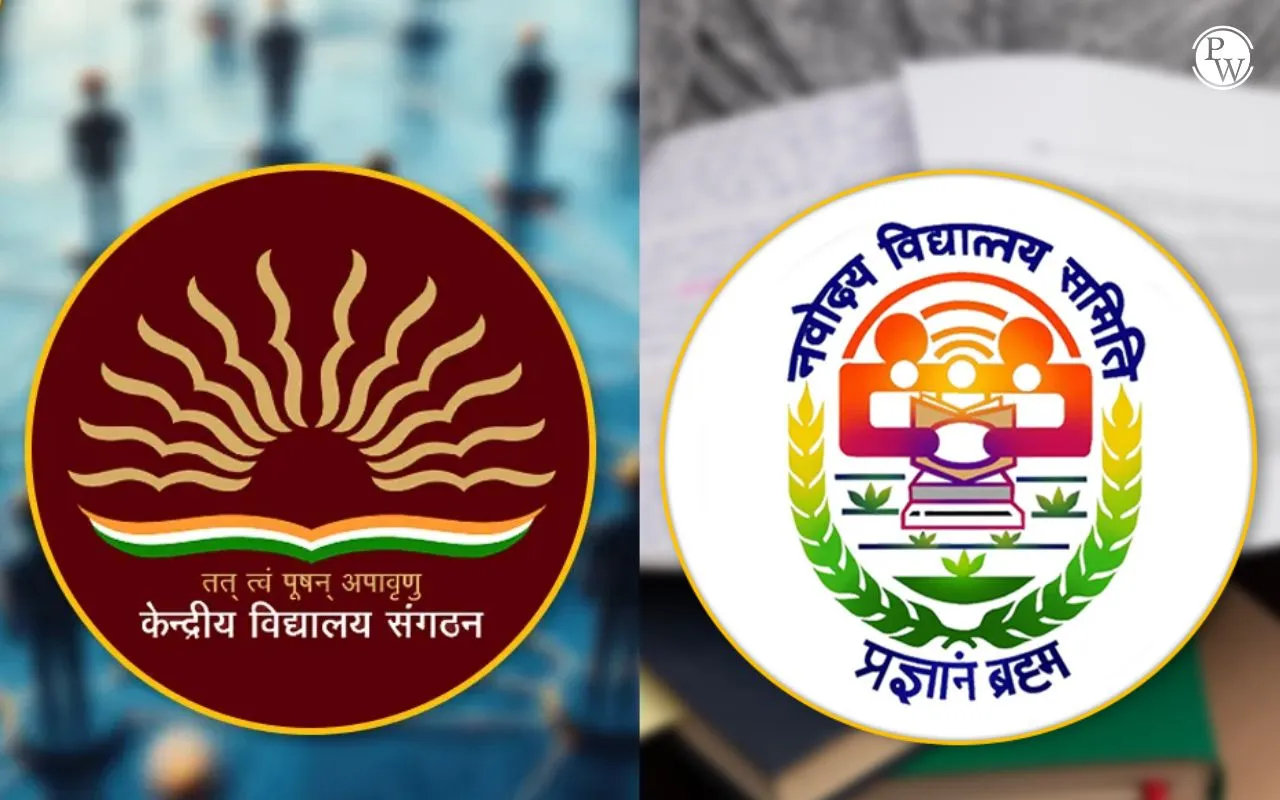

Choosing between Kendriya Vidyalaya Sangathan (KVS) and Navodaya Vidyalaya Samiti (NVS) is one of the biggest decisions for teaching and non-teaching aspirants preparing for central school recruitment in 2026. Both are premier institutions under the Ministry of Education but differ in vacancies, work culture, eligibility, postings, and selection methods. Below is a clear and simplified comparison to help candidates make an informed choice.
10 Points Candidates Should Consider Before Applying for 2026
1. Total Vacancies (2025–26 Cycle)
Before choosing an organisation, understanding the scale of vacancies helps candidates identify better opportunities. The 2025–26 recruitment cycle shows a significant difference in the number of posts offered by both bodies.
KVS: 9,126 vacancies (Teaching + Non-Teaching)
NVS: 5,841 vacancies (Teaching + Non-Teaching)
KVS has a larger recruitment drive compared to NVS, offering more opportunities across India.
| KVS Recruitment 2025 | NVS Recruitment 2025 |
2. Conducting Body and Notification Release
Both organisations follow the same recruitment calendar, and their examinations are conducted by the same authority. This ensures uniformity in planning and preparation for aspirants.
| Category | KVS | NVS |
| Conducting Body | CBSE | CBSE |
| Notification Release | 13 Nov 2025 | 13 Nov 2025 |
| Application Dates | 14 Nov – 4 Dec 2025 | 14 Nov – 4 Dec 2025 |
Both recruitments run on the same timeline and are conducted by CBSE.
3. Major Posts Announced
Candidates must understand which organisation offers posts relevant to their qualification and career path. Both recruit multiple teaching and administrative positions, but their structures vary slightly.
KVS Posts
-
PRT, TGT, PGT
-
Principal, Vice-Principal
-
Librarian
-
ASO, SSA, JSA
-
Other non-teaching posts
NVS Posts
-
TGT, PGT
-
Principal
-
Third-Language Teachers
-
Non-Teaching Posts (administrative + residential roles)
| KVS PGT Vacancy 2025 | NVS PGT Vacancy 2025 |
| KVS TGT Vacancy 2025 | NVS TGT Vacancy 2025 |
| KVS PRT Vacancy 2025 | NVS PRT Vacancy 2025 |
4. Posting and Work Environment Differences
The work environment is one of the biggest differences. KVS mostly operates day schools, while NVS runs fully residential schools, greatly affecting lifestyle, workload, and responsibilities.
KVS (Urban/ Semi-Urban Posting)
-
Schools located in cities, cantonment areas & district headquarters
-
Day schools (no hostel duties)
-
More staff in each school
-
Regular working hours
NVS (Rural/ Residential Posting)
-
Jawahar Navodaya Vidyalayas are fully residential schools
-
Teachers must stay on campus
-
Additional duties: hostel supervision, night duty (rotational)
-
More work intensity but stronger teacher-student bonding
5. Eligibility Criteria Comparison
Eligibility requirements differ slightly for teaching roles. Candidates must check which organisation’s criteria align better with their qualifications.
KVS
-
PRT: Senior Secondary + D.El.Ed/B.El.Ed/B.Ed
-
TGT: Graduation + B.Ed + relevant subject
-
PGT: Post-graduation + B.Ed
NVS
-
PGT: Master’s + B.Ed
-
TGT: Graduation + B.Ed + CTET Paper-II mandatory
-
Principal: PG + B.Ed + experience
Key Difference: CTET Paper-II is mandatory for NVS TGT, not required for KVS TGT.
| KVS Eligibility 2025 | NVS Eligibility 2025 |
6. Age Limit Comparison
Age limits are an important factor for many applicants. Fortunately, KVS and NVS have almost identical upper age limits across most teaching posts.
| Post | KVS Max Age | NVS Max Age |
| PRT | 30 | (PRT rarely recruited nationally) |
| TGT | 35 | 35 |
| PGT | 40 | 40 |
| Principal | 50 | 50 |
Age criteria are almost identical.
7. Exam Pattern Differences
Understanding the exam structure is crucial for planning your preparation strategy. While both exams test similar areas, the marking pattern and weightage differ significantly.
KVS Exam Pattern (Teaching Posts)
-
Total Marks: 180
-
Duration: 3 hours
-
Sections include:
-
English + Hindi
-
GK + Reasoning + Computer
-
Perspectives on Education
-
Concerned Subject (80–100 marks)
-
No negative marking
NVS Exam Pattern
-
Total Marks: 150
-
Duration: 3 hours
-
6 Sections (Common + Subject-specific)
-
0.25 negative marking
-
Language Competency Test (Qualifying with 40% marks)
Key Difference: NVS has negative marking, KVS does not.
| KVS Exam Pattern 2025 | NVS Exam Pattern 2025 |
8. Salary Comparison (7th CPC)
Both organisations follow the 7th Pay Commission, offering similar pay levels and allowances. Teachers receive competitive salaries along with DA, HRA, TA, and other benefits.
| Post | Pay Level | Approx Salary |
| PGT | Level 8 | ₹47,600 – ₹1,51,100 |
| TGT | Level 7 | ₹44,900 – ₹1,42,400 |
| Principal | Level 12 | ₹78,800 – ₹2,09,200 |
Allowances (DA, HRA, TA) apply to both.
| KVS Teacher Salary | NVS Teacher Salary |
9. Selection Process
The selection process for both organisations includes a Computer-Based Test, but the weightage and structure of final evaluation differ.
KVS
-
CBT – 70%
-
Demo Teaching / Skill Test – 15%
-
Interview – 15%
NVS
-
CBT + Interview/Skill Test
-
Language test qualifying separately
-
Negative marking included
10. Which One Should You Choose?
The best choice depends on your career goals, lifestyle preferences, and readiness for residential duties. Both KVS and NVS offer excellent career opportunities, but they cater to different types of work environments.
Choose KVS if you want:
A more urban-oriented career where you work in day schools located in cities or cantonment areas. KVS suits those who prefer fixed working hours, minimal extra duties, and a structured environment. With a larger number of vacancies and no negative marking, it offers comparatively easier entry for many candidates.
Choose NVS if you want:
A residential school experience with deeper teacher-student interactions and a more dynamic educational environment. NVS offers smaller class sizes, a holistic learning atmosphere, and additional residential allowances. Candidates who don’t mind hostel duties and enjoy campus life can find strong long-term growth within the JNV system.
